 the
the
Gay Talese
 reader
reader 
portraits & encounters
Introduction byBarbara Lounsberry

Copyright 2003, 1961, 1962, 1964, 1965, 1966, 1967, 1970,
1989, 1996, 1997 by Gay Talese
Introduction copyright 2003 by Barbara Lounsberry
All rights reserved. No part of this book may be reproduced or transmitted in any form or by any means, electronic or mechanical, including photocopying, recording, or by any information storage and retrieval system, without permission in writing from the Publisher.
First published in the United States of America in 2003
by Walker Publishing Company, Inc.
Published simultaneously in Canada by Fitzhenry and Whiteside,
Markham, Ontario L3R 4T8
For information about permission to reproduce selections from this book, write to Permissions, Walker & Company, 104 Fifth Avenue, New York, New York 10011
"New York Is a City of Things Unnoticed" was originally published in New York: A Serendipiter'sJourney, New York: Harper & Brothers, 1961. The following essays first appeared in Esquire magazine: "Frank Sinatra Has a Cold" (1966); "The Loser" (1964); "The Silent Season of a Hero" (1966); "Peter O'Toole on the Ould Sod" (1963); "Vogueland" (1961); "Looking for Hemingway" (1960); "Joe Louis: The King as a Middle-Aged Man" (196?); "Mr. Bad News" (1966); "Ali in Havana" (1996); and "The Brave Tailors of Maida" (1989). They were later reprinted in Fame and Obscurity, Cleveland: World Publishing, 1970. "Peter O'Toole on the Ould Sod," "Looking for Hemingway," and "Joe Louis: The King as a Middle-Aged Man" were also reprinted in The Overreachers, New York: Harper & Row, 1965. "Ali in Havana" was also reprinted in The Best American Essays1997, New York: Houghton Mifflin Company, 1997. "The Brave Tailors of Maida" was also reprinted in TheBest American Essays 1989, Boston: Ticknor & Fields, 1989. "Origins of a Nonfiction Writer" was originally published in Writing Creative Nonfiction: The Literature of Reality, with Barbara Lounsberry. Boston: Addison-Wesley, 1997. "When I Was Twenty-five" first appeared in P.O.V. magazine (1997). "Walking My Cigar" first appeared in Cigar Aficionado (1992).
Library of Congress Cataloging-in-Publication Data
Talese, Gay.
The Gay Talese reader : portraits & encounters / introduction by Barbara Lounsberry.
p. cm.
eISBN 978-0-802-71915-7
1. JournalismUnited States. 2. Reportage literature, American. I. Title.
PN4725.T35 2003
071'.3dc22 2003055579
Visit Walker & Company's Web site at www.walkerbooks.com
Book design by Maura Fadden Rosenthal/mspace
Printed in the United States of America
6 8 10 9 7 5
Contents
Barbara Lounsberry
For more than half a century Gay Talese has told real American stories- stories of bridge builders and the men and women who built the NewYork Times; of gangsters and Vogue editors; of overlooked Americans like the man who rang the bell at Madison Square Garden prizefights and the diplomatic barber who cut hair at the United Nationsstories, as he told Playboy, not of "the mythology of fame and success but the real soul of success and the bitterness of attaining [it] and the heartbreak of not attaining it." He broke the Mafia's "code of silence"; dared to report on American adultery; and has painted indelible portraits of Joe DiMaggio and Joe Louis, Frank Sinatra and Floyd Patterson and Muhammad Aliportraits from unusual angles and of singular depth. He reframes the famous and celebrates the unnoticed in prose as lovingly crafted as the works of his immigrant Italian-American forebearshis father, Joseph, a tailor, and his namesake grandfather, Gaetano, a stonemason. Works created from fine materials, made to last.
A reporter's reporter who is revered by fellow writers, Talese possesses a long standing coterie of loyal and admiring readers. His stories are told with seamless artistry, reading almost like fiction, so that readers lose sight of the extraordinary daring and persistent effort required to obtain them. Admired though he is, Talese has not always been adequately recognized for extending the boundaries of nonfiction subject matteras well as styleto enlarge our understanding of the human condition.
The Kingdom and the Power, the first of Talese's four consecutive best-sellers, is a case in point. When the thirty-five-year-old writer first proposed his "human history" of the New York Times to New York publishers, he was told that no one was interested in reporters. When the book became an unexpected best-seller in 1969, journalists' lives suddenly were of great interest to many, as seen in the plethora of inside-the-media books that followed: among them, Brendan Gill's Here at the New Yorker and Carl Bernstein and Bob Woodward's All thePresident's Men. In like manner, fans of today's television Mafia family, the Sopranos, probably do not realize that in the late 1960s, when Talese embarked on the story of real family life in the Mafia, which became Honor Thy Father in 1971, journalistic consensus was that the Mafia's "code of silence" was impenetrable and enduring. "They will not talk to you," was the general opinion. Nonetheless, Talese managed to enter and live for months with the Bonanno family, to ride unarmed with Bill Bonanno's bodyguards, and to write about them all, opening the door this time to a flood of nonfiction life-in-the-Mafia books, including chieftain Joseph Bonanno's 1983 autobiography, AMan of Honor.
Talese turned to sexual taboos for his third and most controversial book, the 1980 best-seller Thy Neighbors Wife, which chronicled sex and censorship in the United States from the Puritans to modern-day Americans. Here Talese reported from within the bedroom using real names and with the permission of the participants. An extraordinary financial successfilm rights alone sold for a then-record $2.5 millionThy Neighbors Wife became the first Talese work to outrage reviewers, many of whom were shocked at his opening the doors of sexual privacy, at his hinting at the social benefits of massage parlors, and at his widely publicized participatory research methods.
Next he abandoned the biggest story of his career, that of Lee Iacocca and Chrysler, to write about his father's life as an Italian-American in his 1992 Unto the Sons. It was of a piece for a writer who has always turned away from the "big story" to report the unnoticed one.
Gay Talese was born February 7, 1982, on the small island of Ocean City, New Jersey, a resort town just south of Atlantic City. The boy was a minority within a minority, an Italian-American Catholic in an Irish Catholic parish on an island settled as a Methodist religious retreat in 1879. He was neither Irish nor Methodist, neither blue-eyed nor fair-skinned, and he did poorly in school. Talese stood apart from his classmates in more than just his visage, his name, and his miserable grades. He was the only student who came to class wearing a jacket and tie, a walking advertisement for his father's tailoring prowess in his small beautifully hand-stitched suits. An immigrant's son raised with impeccable "store manners"his parents owned the Talese Town Shop, which grew to include a dry cleaning business, fur storage, and a fashionable women's dress boutique when men's custom tailoring proved insufficiently profitablehe was ever respectful but shy and isolated from his classmates.

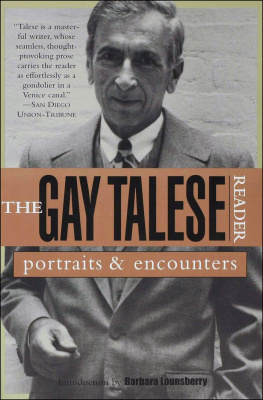
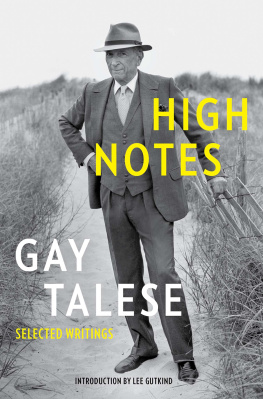
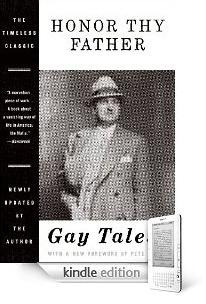
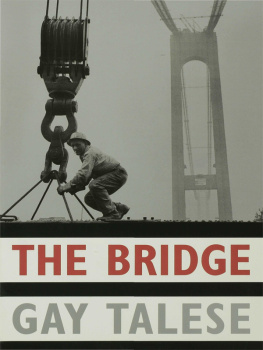
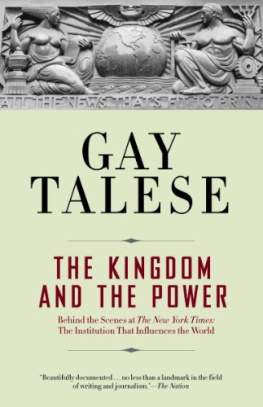
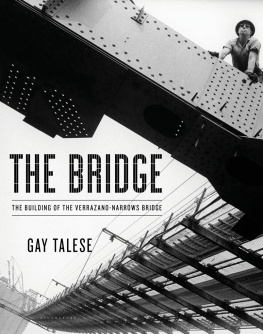

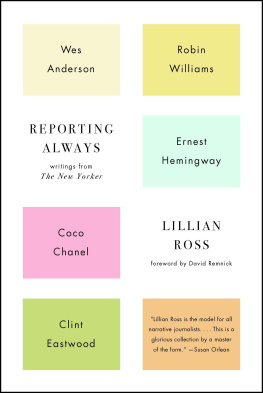

 the
the